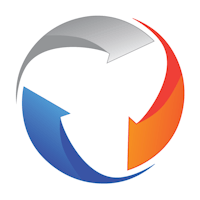Digital badges, microcredentials and digital credentials… What sets them apart, or are they synonymous? Essentially, these credentials share a few attributes: They are skill-specific and emphasize industry-relevant competencies. Moreover, they possess the valuable quality of being stackable, allowing learners to accumulate multiple credentials over time, systematically enhancing their expertise through a portfolio of competencies.
One of the draws to credentialing programs is that they afford learners unparalleled flexibility while requiring a considerably smaller investment of time than traditional degree programs. Nevertheless, a pressing question remains: Do all credential programs uniformly pave the way to enhanced career opportunities?
The credentialing world has grown significantly in the last few years, resulting in an evolving and sometimes undefined digital education model. Yet, there is clear value in digital credentials within higher education and job-embedded professional learning. Recently, EdSurge spoke with Rob Coyle, a digital credential program manager at 1EdTech, a 25-year strong, members-based standards consortium focused on uniting digital learning systems and standardizing learning credentials. Coyle’s background in instructional design in higher ed has provided him with an important perspective when tackling the drive for interoperability in the credentialing landscape.
EdSurge: How has the concept and practice of microcredentialing evolved over the years?
Coyle: It seems every credentialing organization has its own definition of microcredentials, alternative credentials, digital credentials and badges.… But I think, ultimately, we're often talking about the same thing: a formal expression of a skill that can be demonstrated or knowledge that can be assessed as something that has been mastered.
One of the original concepts of microcredentials came from Mozilla’s drive for open recognition of skills through badges. 1EdTech inherited Open Badges from Mozilla in 2017. This move aimed to partner Mozilla’s established community of badges with the standards-driven body of 1EdTech.
Digital credentialing is an electronic means of transferring data about an individual’s accomplishments, resulting in a PDF, image or other digital learning record. Credentials that adhere to the Open Badges or CLR [Comprehensive Learner Record] standards have a specific way of packaging that data to be both human-readable and machine-readable. That's where the credential value comes in. Not only are you communicating what the data is, but you're doing it in a way that can be used by people and machines, verifying various academic and workplace achievements. Because the credentials are standardized, we can make that flow of information much more seamless across different systems. This adds value to the credential.
What are the advantages for learners to use digital credentialing? How does badge standardization affect employers and higher education institutions?
The Open Badges and the CLR standards help learners express the skills and knowledge they have achieved. Courses don’t always provide such transparency around these competencies. Your history course may not specify that you are gaining skills in research, writing and evaluation logic. Digital credentialing helps unpack and identify each skill. That in itself is valuable to learners: understanding the skills they are gaining and conveying that to others. This is priceless in a job interview. When you have electronically verifiable credentials, you're taking it to a whole new level to empower the learner to maximize their potential.
With digital credentials, learners can showcase skills they have mastered in a smaller package than a degree — before earning a degree. In the context of higher education, students can earn badges for their skills along the way. This means learners can try out different career pathways without having to fully commit to that degree. Or maybe you already have a degree but want to change course. Microcredentials allow learners to respond to market needs faster. Technology certifications change constantly; a digital credential allows learners to continue building on those new skills, allowing them to be agile. That badge gives learners more opportunities in different internships and careers.
The digital credential provides employers with verifiable information about prospective employees. That’s an important advantage for employers. It saves time in the hiring process and brings more confidence in the hiring decision. A partner organization recently told me one of their employers hired someone specifically based on their digital credentials, cutting out two weeks of background research.
And the number of credentials is increasing drastically. There have been over 74 million badges issued worldwide. That growth is just bringing more attention to digital credentials and, ultimately, more value to the employer for badge standardization.
In the higher education setting, a lot goes into the governance structure around creating course content. Our conversation with institutions is that they don’t need to create new content or new programs for badges; there doesn’t have to be this hurdle of creating something new. Instead, start with badging the skills that are in the existing courses. Package those skills in a digital credential. That brings more value to their programs.
I often get email inquiries from faculty about offering Open Badges to students in their courses. We clearly need a systematic approach to implementing digital credential programs at the organizational level. As an edtech organization whose background is in standards and interoperability, 1EdTech is positioned to contribute here. We collaborate with institutions and edtech vendors to help universally define the standards ecosystem and support the mobility of digital credentials through technology solutions, and we offer certification of platforms to ensure they are adhering to the standards as intended.
Now, we’re working on a new framework to increase the value of microcredentials for all stakeholders. Our TrustEd Microcredential Coalition is working on setting a standard for what the information digital credentials need to contain in terms of transparency with respect to skills, knowledge and abilities a learner achieved, and ensuring the credential is interoperable. We hope to have a framework finalized in time for 1EdTech’s Digital Credentials Summit in March.
What is a success story related to the implementation and recognition of microcredentials within educational and employment contexts?
My colleague Kelly Hoyland just shared with me about an institution we are working with that has made it a priority to issue microcredentials focused on transitioning a learner to a family-sustaining wage. This particular institution is in a very impoverished city, so anything we can do to help those learners break through the barriers and increase their salary is a success.
Another success story that comes to mind is from a provider that is partnering with a social justice nonprofit to help give internship opportunities to students from disadvantaged backgrounds. The digital credential program is helping promote equity and social justice, reaching communities beyond the traditional educational pathway.
There are so many examples like these, and that’s what I love about the 1EdTech community, is that we have all of these different people representing different types of industries and learners working together to find standards and solutions that will help everyone be successful.



